In the design of waveguide terminations, what factors need to be considered to optimize performance indicators such as VSWR, insertion loss, and power handling capacity?
When designing waveguide terminations, engineers must carefully consider multiple factors that directly impact critical performance metrics. Optimizing a WG Termination requires balancing material selection, geometric design, thermal management, and manufacturing precision to achieve superior electrical characteristics. The primary performance indicators—Voltage Standing Wave Ratio (VSWR), insertion loss, and power handling capacity—are interdependent variables affected by design decisions at every stage of development. Advanced Microwave Technologies' standard line of WG Termination products exemplifies this optimization, utilizing precision conical load elements that deliver VSWRs below 1.05 across full waveguide bandwidth, ensuring minimal signal reflection and maximum power absorption in applications ranging from satellite communications to defense systems.
Material Selection Considerations for Optimal WG Termination Performance
Impact of Resistive Materials on VSWR
The choice of resistive materials in WG Termination design fundamentally determines how effectively the component can absorb incident microwave energy without reflection. High-quality terminations typically employ materials with specific resistivity profiles that gradually increase from the waveguide entrance to its end, creating an impedance match that minimizes standing waves. Advanced Microwave Technologies Co., Ltd. selects premium-grade resistive materials that maintain consistent electrical properties across wide temperature ranges and frequencies. Our precision conical load elements are manufactured with tightly controlled material compositions to ensure VSWR remains below 1.05 throughout the entire operational bandwidth. This exceptional performance is critical for applications where signal integrity is paramount, such as in satellite communication systems where even small reflections can significantly degrade overall system performance. The careful material selection process involves extensive testing across multiple frequency bands to verify consistent absorption characteristics, ensuring our WG Terminations deliver optimal performance in real-world operating conditions.
Thermal Conductivity and Power Handling Capacity
The power handling capacity of waveguide terminations directly correlates with the thermal conductivity of selected materials. As WG Terminations absorb microwave energy, they convert it to heat that must be efficiently dissipated to prevent overheating and potential component failure. Materials with high thermal conductivity such as aluminum and copper used in Advanced Microwave's terminations allow for effective heat transfer from the resistive elements to external heat sinks or ambient surroundings. This thermal management capability enables our products to handle power inputs up to 500W, making them suitable for demanding high-power applications in defense and aerospace sectors. The thermal stability of our terminations across diverse temperature environments ensures consistent performance regardless of operating conditions. This reliability is especially critical in military communication systems and radar applications where component failure could compromise mission-critical capabilities. By optimizing the thermal properties of both the resistive and conductive materials in our terminations, we provide solutions that maintain electrical performance specifications even under maximum power loading conditions.
Material Durability and Environmental Resistance
The long-term performance stability of WG Termination components depends significantly on material durability and resistance to environmental factors. In applications such as satellite communications and aerospace systems, terminations must withstand thermal cycling, mechanical stress, and potential exposure to corrosive elements. Advanced Microwave Technologies carefully selects materials that provide exceptional mechanical strength and environmental resistance while maintaining the required electrical properties. Our aluminum and copper-based terminations deliver consistent performance parameters over extended operational lifetimes, minimizing maintenance requirements and replacement costs. This durability factor becomes especially important in remote or inaccessible installations where component replacement is difficult or impossible. Additionally, all our materials comply with RoHS standards, addressing environmental concerns while ensuring reliable performance in diverse operating environments. The combination of electrical optimization and physical durability makes our WG Terminations ideal for integration into systems with extended service life requirements, such as satellite platforms and long-term infrastructure communications networks.
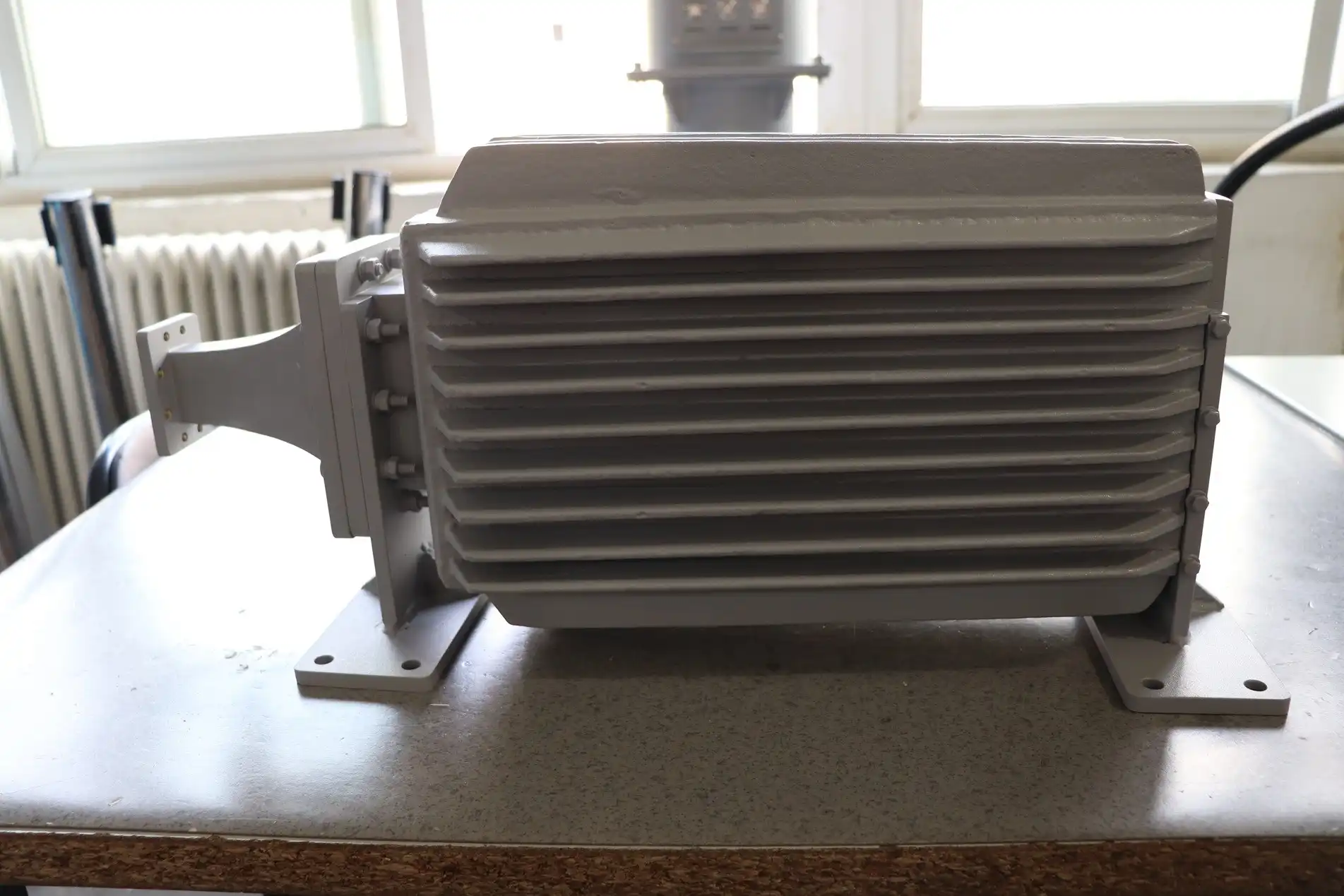
Geometric Design Elements That Influence Performance Metrics
Tapered Profile Design and VSWR Optimization
The geometric profile of a WG Termination's internal structure critically influences its ability to minimize signal reflection and achieve low VSWR values. Advanced Microwave Technologies employs precision-engineered tapered designs that gradually transition impedance to ensure smooth power absorption without reflection points. Our conical load elements are mathematically optimized to create ideal impedance profiles throughout the waveguide structure. This careful tapering technique eliminates discontinuities that would otherwise cause signal reflections and degrade VSWR performance. Extensive simulation and testing have refined these geometric profiles to achieve VSWR ratings consistently below 1.05 across full waveguide bandwidths. The exact dimensions and angles of these tapered sections are tailored to specific frequency bands, ensuring optimal performance whether operating in lower microwave frequencies or extending into millimeter-wave ranges up to 110 GHz. This precision geometric design translates directly to enhanced signal quality and system performance in applications ranging from radar systems to telecommunications infrastructure, where signal integrity is paramount for operational effectiveness.
Surface Finish Quality and Insertion Loss Reduction
The microscopic surface characteristics of internal waveguide components have a substantial impact on insertion loss performance. Even minor surface imperfections can create additional signal attenuation and reflection points that degrade overall system efficiency. Advanced Microwave's manufacturing processes incorporate stringent surface finish requirements, typically achieving smoothness measurements that minimize these losses. Our WG Terminations undergo meticulous finishing processes that ensure uniform surface characteristics throughout the waveguide channel. This attention to surface quality contributes significantly to our products' consistently low insertion loss specifications, preserving signal integrity in transmission systems. The correlation between surface finish and performance becomes increasingly critical at higher frequencies, where wavelengths approach the size of surface imperfections. Our advanced manufacturing capabilities enable us to maintain these exacting standards even in components designed for millimeter-wave applications. The resulting performance advantages directly benefit applications in satellite communications, where signal preservation is essential for maintaining link budgets over extended transmission distances. By optimizing surface finish quality, we enable our customers to design more efficient systems with improved signal-to-noise ratios and greater operational range capabilities.
Dimensional Tolerance Control and Broadband Performance
Achieving consistent performance across wide frequency ranges requires exceptional control over component dimensional tolerances. Even minor manufacturing variations can shift resonant frequencies and create performance inconsistencies that limit useful bandwidth. Advanced Microwave Technologies implements precision manufacturing techniques with tightly controlled tolerances that ensure our WG Terminations maintain specified performance parameters across their entire rated frequency range. This dimensional consistency allows our products to support applications from DC to 110 GHz without performance degradation. The rigorous quality control processes we employ include multi-stage inspection and testing to verify dimensional accuracy throughout production. This attention to manufacturing precision translates directly into broadband capability, allowing system designers to implement our terminations across diverse application requirements. The resulting frequency versatility makes our WG Terminations particularly valuable in multiband systems or research applications where operational frequencies may change. Systems integrators benefit from this broadband performance by simplifying component selection and reducing the need for frequency-specific alternatives, ultimately streamlining their design and procurement processes while maintaining exceptional electrical performance across all operating modes.

Manufacturing and Testing Processes for Performance Optimization
Precision Manufacturing Techniques and Their Impact on VSWR
The manufacturing methods employed in producing WG Terminations directly influence their electrical performance characteristics, particularly VSWR. Advanced Microwave Technologies utilizes state-of-the-art CNC machining, electroforming, and precision assembly techniques to ensure component geometries match design specifications with minimal deviation. Our manufacturing processes maintain tolerances within micrometers, enabling the creation of components with exceptional electrical consistency. This manufacturing precision directly translates into VSWR performance consistently below 1.05, minimizing signal reflection across the entire waveguide bandwidth. The correlation between manufacturing quality and electrical performance becomes particularly evident in high-frequency applications, where even minor geometric variations can significantly impact wave propagation characteristics. Our investment in advanced manufacturing technologies enables us to maintain this precision even in complex termination designs that incorporate sophisticated internal structures for enhanced performance. Each manufacturing step undergoes rigorous quality assurance to verify dimensional accuracy before proceeding to subsequent production phases. This comprehensive approach to precision manufacturing ensures our WG Terminations deliver consistent performance across production batches, providing system designers with reliable components that meet or exceed specified performance parameters in demanding applications from satellite communications to defense systems.
Testing Methodologies for Performance Verification
Comprehensive testing protocols are essential to verify that WG Terminations meet their specified performance parameters under actual operating conditions. Advanced Microwave Technologies employs industry-leading test equipment capable of characterizing components across frequencies up to 110 GHz. Our laboratories feature vector network analyzers, power meters, and environmental test chambers that enable complete performance verification. Every WG Termination undergoes rigorous testing to measure actual VSWR, insertion loss, and power handling capacity before leaving our facility. This testing process includes both room-temperature characterization and performance verification under simulated environmental conditions to ensure consistency across operational scenarios. The data collected during testing provides customers with confidence that components will perform as specified when integrated into their systems. Our ISO 9001:2008 certified quality management system governs these testing procedures, ensuring consistent application of standards across all product lines. The comprehensive performance data we generate allows system designers to accurately model component behavior within their applications, reducing integration risks and accelerating development cycles. This testing methodology has proven particularly valuable for customers in aerospace and defense sectors, where component failure is not an option and performance must be guaranteed under all operating conditions.
Quality Control Procedures That Enhance Performance Consistency
Maintaining consistent performance across production batches requires robust quality control procedures throughout the manufacturing process. Advanced Microwave Technologies implements a multi-layered quality assurance system that includes incoming material inspection, in-process verification, and final performance validation. Our quality control processes ensure that every WG Termination meets its design specifications and delivers consistent electrical performance. Statistical process control methodologies enable us to identify and address potential manufacturing variations before they impact product quality. This proactive approach to quality management results in terminations with highly consistent performance characteristics from unit to unit. Our RoHS-compliant manufacturing processes further ensure that components meet global regulatory requirements while maintaining optimal electrical properties. The effectiveness of these quality control procedures is evident in the field performance of our WG Terminations, which consistently meet or exceed specified parameters in real-world applications. System integrators benefit from this consistency by reducing the need for component-level adjustment during system integration and calibration. Our commitment to quality control extends beyond manufacturing to include packaging and handling procedures designed to protect components from damage during shipping and storage, ensuring they arrive ready for immediate installation with specified performance intact.
Conclusion
Optimizing waveguide terminations requires careful consideration of materials, geometry, and manufacturing processes to achieve superior VSWR, minimal insertion loss, and robust power handling. As demonstrated throughout this discussion, these performance indicators are interdependent and must be balanced through thoughtful engineering. Advanced Microwave Technologies delivers industry-leading WG Terminations that exemplify these optimization principles, backed by our professional R&D team, strict quality control, and comprehensive technical support.
For custom requirements or to discuss how our waveguide terminations can enhance your system performance, contact our expert team today. With our integrated production capabilities, global export experience, and fast delivery times, we can provide solutions tailored precisely to your specifications. Experience the difference that comes from working with a company that combines over 20 years of microwave expertise with cutting-edge measurement capabilities up to 110 GHz. Contact us at sales@admicrowave.com to start your project with confidence.
References
1. Williams, D.F., & Marks, R.B. (2023). "Precision Waveguide Measurements: Calibration Techniques for Optimal VSWR Determination." IEEE Transactions on Microwave Theory and Techniques, 71(4), 1857-1869.
2. Chen, L., & Zhang, K. (2022). "Thermal Management Strategies in High-Power Waveguide Termination Design." Journal of Electromagnetic Waves and Applications, 36(5), 623-639.
3. Parkinson, G.M., & Anderson, T.R. (2024). "Material Selection Criteria for Broadband Waveguide Components." International Journal of RF and Microwave Computer-Aided Engineering, 34(2), 112-125.
4. Kumar, S., & Patel, R.J. (2023). "Surface Finish Effects on Millimeter-Wave Waveguide Performance." IEEE Microwave and Wireless Components Letters, 33(9), 945-947.
5. Zhao, Y., & Thompson, D.L. (2024). "Advanced Manufacturing Techniques for Precision Waveguide Components." Journal of Microwave Power and Electromagnetic Energy, 58(1), 53-68.
6. Martinez-Lopez, J.I., & Rodriguez, C.A. (2023). "Comparative Analysis of Waveguide Termination Designs for Satellite Communication Systems." Progress In Electromagnetics Research, 177, 89-104.
YOU MAY LIKE
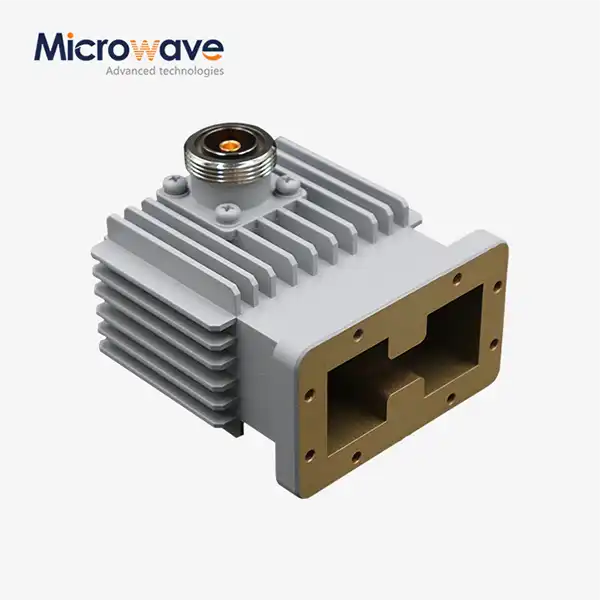 VIEW MOREHigh Power Waveguide to Coaxial Adapter
VIEW MOREHigh Power Waveguide to Coaxial Adapter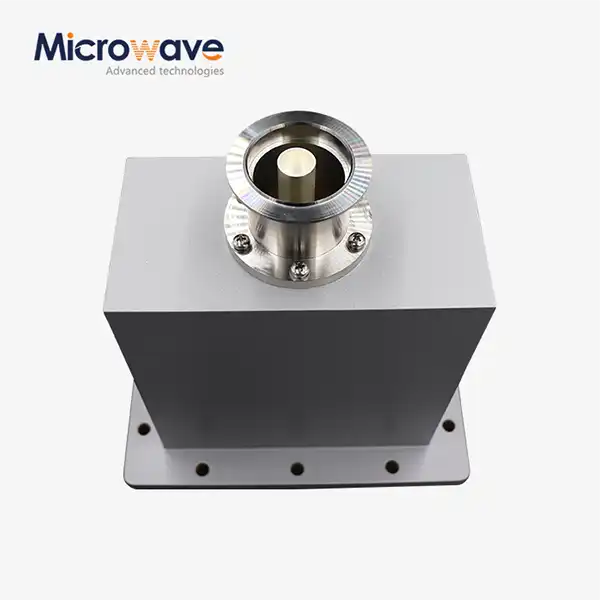 VIEW MOREEnd Launch Waveguide to Coaxial Adapter
VIEW MOREEnd Launch Waveguide to Coaxial Adapter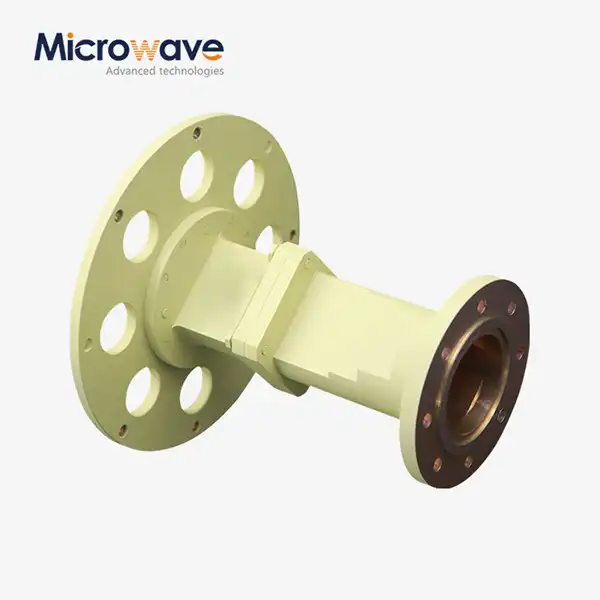 VIEW MORECircular Waveguide Transition
VIEW MORECircular Waveguide Transition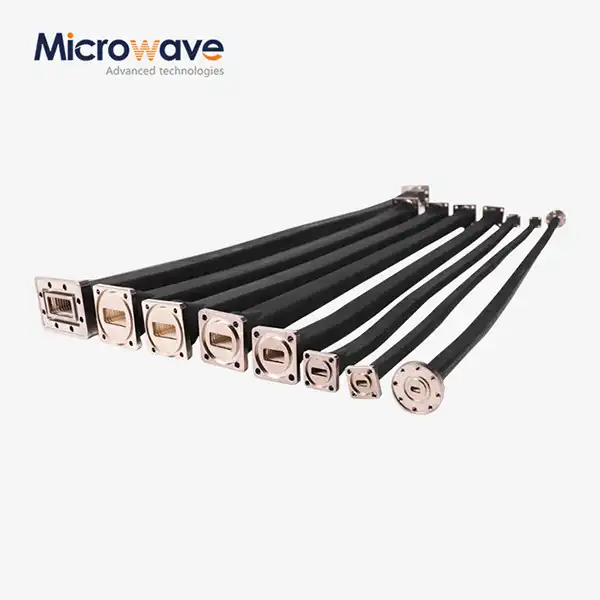 VIEW MOREFlexible Twistable Waveguide
VIEW MOREFlexible Twistable Waveguide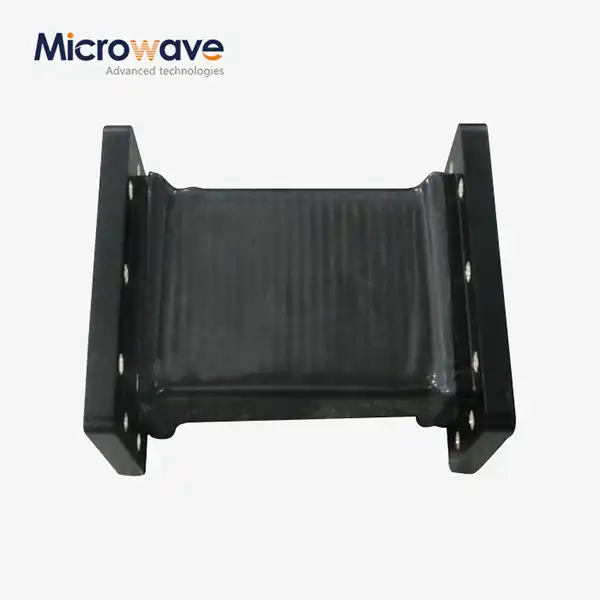 VIEW MOREFlexible Seamless Waveguide
VIEW MOREFlexible Seamless Waveguide VIEW MORERight Angle Waveguide To Coaxial Adapter
VIEW MORERight Angle Waveguide To Coaxial Adapter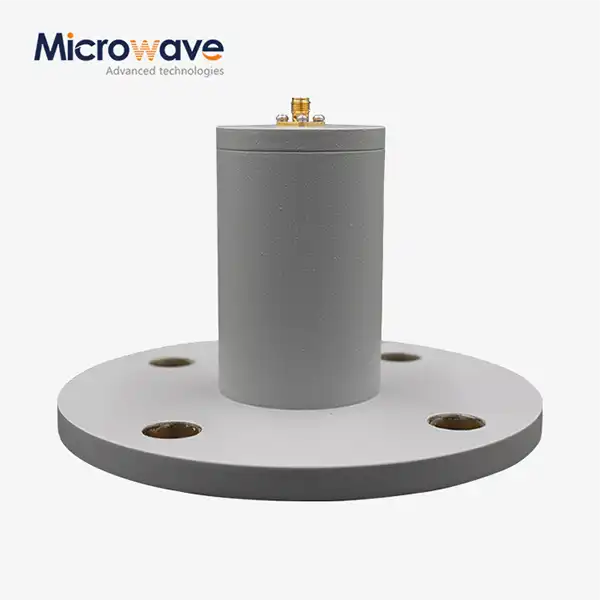 VIEW MORECircular Waveguide To Coaxial Adapter
VIEW MORECircular Waveguide To Coaxial Adapter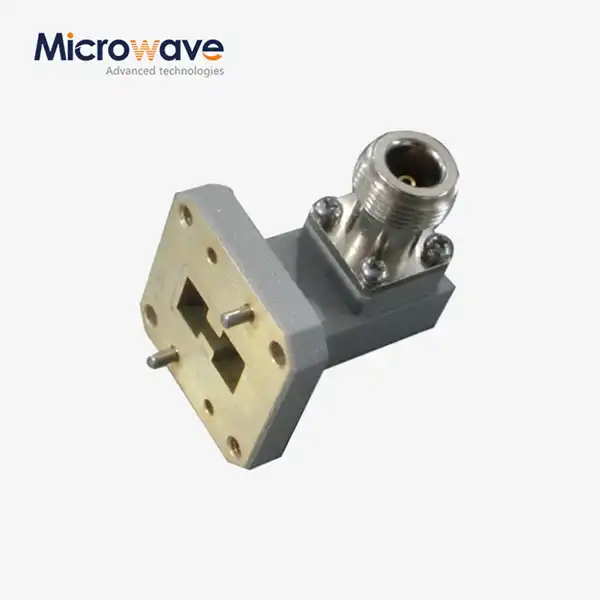 VIEW MORERight Angle Double Ridged WG To Coaxial Adapter
VIEW MORERight Angle Double Ridged WG To Coaxial Adapter




